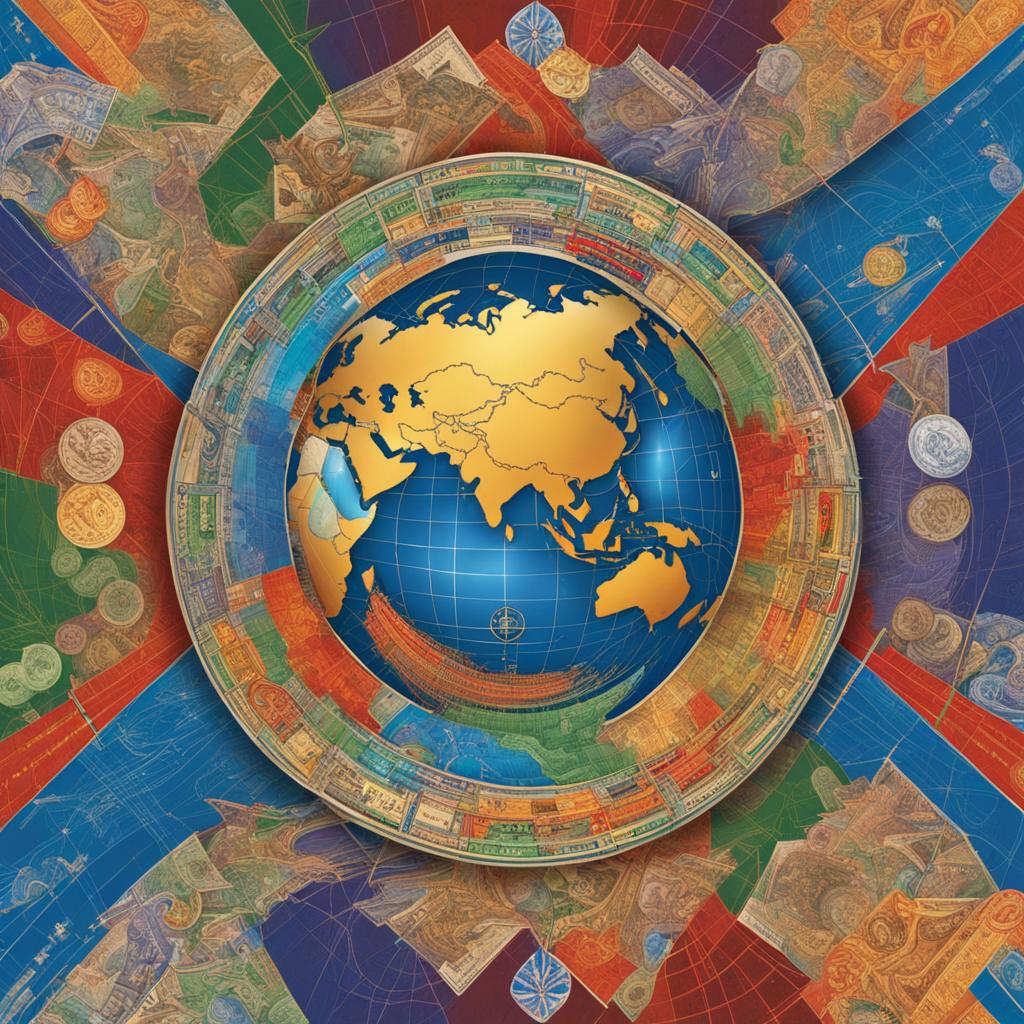Welcome to our in-depth exploration of the International Monetary System. Here, we will take a closer look at this complex financial system and examine its role in shaping the global economy. At its core, the International Monetary System is a network of institutions, policies, and agreements that govern international monetary transactions and exchange rates between countries.
The system is designed to foster economic cooperation and stability among nations, but its workings and impacts can often be difficult to understand. That’s why we’re here to provide a comprehensive overview of its various components and functions.
Through this deep dive, we hope to offer valuable insights into the International Monetary System and its role in shaping the financial landscape of the world. So, let’s get started on our journey to understanding this critical part of the global economy!
Understanding the International Monetary System
Before we begin exploring the intricacies of the International Monetary System, let’s first establish what it is. The International Monetary System refers to the network of global financial institutions, rules, and procedures that facilitate international trade and investment, as well as the exchange of currencies among nations.
Now that we have a basic understanding of what the International Monetary System is, let’s explore its historical background. The system traces its roots back to the Bretton Woods Agreement of 1944, which established the US dollar as the global reserve currency and tied its value to gold. While the Bretton Woods system collapsed in the 1970s, it paved the way for the current system of floating exchange rates and flexible monetary policies.
The International Monetary System is governed by several key institutions, including the International Monetary Fund (IMF), the World Bank, and the Bank for International Settlements. Each institution plays a critical role in maintaining the stability and efficiency of the global financial system.
The International Monetary Fund (IMF)
The IMF, founded in 1944, is an international organization that works to promote monetary cooperation, facilitate international trade, and support economic growth and stability. It provides financial assistance to member countries experiencing balance of payments difficulties, as well as policy advice and technical assistance to help countries address economic challenges.
The World Bank
The World Bank, established in 1944, is a global development institution that provides loans, grants, and other assistance to low- and middle-income countries to support poverty reduction and economic development. It is composed of two distinct institutions: the International Bank for Reconstruction and Development (IBRD) and the International Development Association (IDA).
The Bank for International Settlements (BIS)
The BIS, founded in 1930, is an international financial institution that serves as a forum for cooperation between central banks. It provides a platform for central banks to exchange views and analysis on global economic and financial developments, as well as to collaborate on key policy issues.
Finally, let’s explore some of the principles that underpin the operations of the International Monetary System. First and foremost, the system emphasizes the importance of flexible exchange rates, allowing currencies to fluctuate in response to market forces. Additionally, the system encourages the free flow of capital across borders, promoting investment and economic growth. However, the system also recognizes the need for international cooperation and coordination to ensure the stability and functionality of the global financial system.

“The International Monetary System refers to the network of global financial institutions, rules, and procedures that facilitate international trade and investment, as well as the exchange of currencies among nations.”
- Flexible exchange rates
- Free flow of capital
- International cooperation and coordination
With this foundational understanding of the International Monetary System, we can now begin to explore its impacts on the global economy in further detail in the next section.
The Impacts of the International Monetary System
In this section, we will explore the various impacts of the International Monetary System on the global economy. The International Monetary System has a significant influence on exchange rates, trade flows, and economic stability. While it is a complex system with many moving parts, understanding its impacts is crucial for anyone involved in global finance.
The impacts on exchange rates
One of the primary impacts of the International Monetary System is on exchange rates. The system helps to facilitate international trade by establishing a common currency for global transactions. However, this can lead to fluctuations in exchange rates as countries adjust their currencies to maintain competitiveness. The system also provides a framework for managing exchange rate volatility through mechanisms such as currency pegs and flexible exchange rates.
For example, in the 1990s, countries in Europe agreed to establish the euro as a common currency. This helped to facilitate trade between member states and reduce exchange rate volatility. However, the system has faced challenges in recent years due to economic disparities between member states.
The impacts on trade flows
The International Monetary System also has a significant impact on global trade flows. The system helps to facilitate trade by providing a common currency for transactions and establishing rules for international trade. However, it can also create imbalances in trade flows as countries seek to maintain their competitiveness through currency manipulation or protectionist policies.
For example, China has been accused of manipulating its currency to maintain a competitive advantage in global trade. This has led to imbalances in trade flows between China and its trading partners, particularly the United States.
The impacts on economic stability
The International Monetary System plays a crucial role in promoting economic stability around the world. It helps to prevent financial crises by providing liquidity to countries experiencing balance of payments difficulties. Additionally, it establishes standards for financial regulation and supervision to promote the soundness of the global financial system.
For example, during the 2008 financial crisis, the International Monetary Fund provided financial assistance to countries such as Greece and Ireland to help stabilize their economies.
The challenges and criticisms
Despite its many benefits, the International Monetary System faces several challenges and criticisms. Critics argue that the system can be biased towards developed countries at the expense of developing countries. Additionally, some argue that the system can exacerbate inequalities and perpetuate global imbalances in trade and finance.
For example, some critics have called for reforms to the International Monetary System to give developing countries a greater voice in decision-making.
Overall, the International Monetary System is a complex system that plays a vital role in the global economy. Understanding its impacts is critical for anyone involved in global finance.
Conclusion
Throughout this article, we have explored the complexities of the International Monetary System and its impacts on global finance. As we reflect on our findings, it becomes clear that this system plays a crucial role in promoting economic stability and facilitating global trade.
Despite its significant contributions, the International Monetary System faces inherent challenges and criticisms. Its influence on exchange rates and trade flows can sometimes lead to imbalances and volatility in financial markets. Additionally, some argue that the system favors certain countries and perpetuates inequality.
Looking forward, we believe that the International Monetary System will continue to evolve and adapt to meet the changing needs of the global economy. Potential reforms such as increased transparency and accountability of its governing institutions, as well as a greater emphasis on inclusive growth, could help to address some of the criticisms it faces.
In conclusion, while the International Monetary System is not without its flaws, we believe that its benefits to the global economy outweigh its drawbacks. As such, we must continue to work towards improving and strengthening this vital component of the international financial system.




